The most important trees in Mexico



We are fortunate to live in one of the most biodiverse countries on the planet. Among the multitude of species of flora and fauna that surround us, trees are, perhaps, the ones we take for granted the most; despite being able to exceed our buildings in height, providing shade for our heads, helping to regulate the climate and generating oxygen, trees tend to become invisible in our daily lives just because they are so present in most regions of Mexico, both in rural areas, where the tree is lost in the general landscape, and in many cities, where it is relegated to a decorative element of a Camellon.
In this article, we want to recognize the trees that are part of Mexico's unique identity; to “recognize” in the sense of knowing again and rediscovering these great plants that we take for granted and that have helped to build our culture and economy and are also a key piece in the ecosystem they inhabit.
We are going to visit several trees of cultural, economic and ecological importance. It is difficult to classify them in this way because each one contributes simultaneously to all three categories, however, in each case there is a category that stands out. In the end We have a gift for you, dear reader: a thank you for sharing our passion for climate action, nature and science. You can download two wallpapers for desktop and mobile, made by the talented illustrator The Bird, in which three of the most iconic trees of our beloved country are represented in a majestic scene.
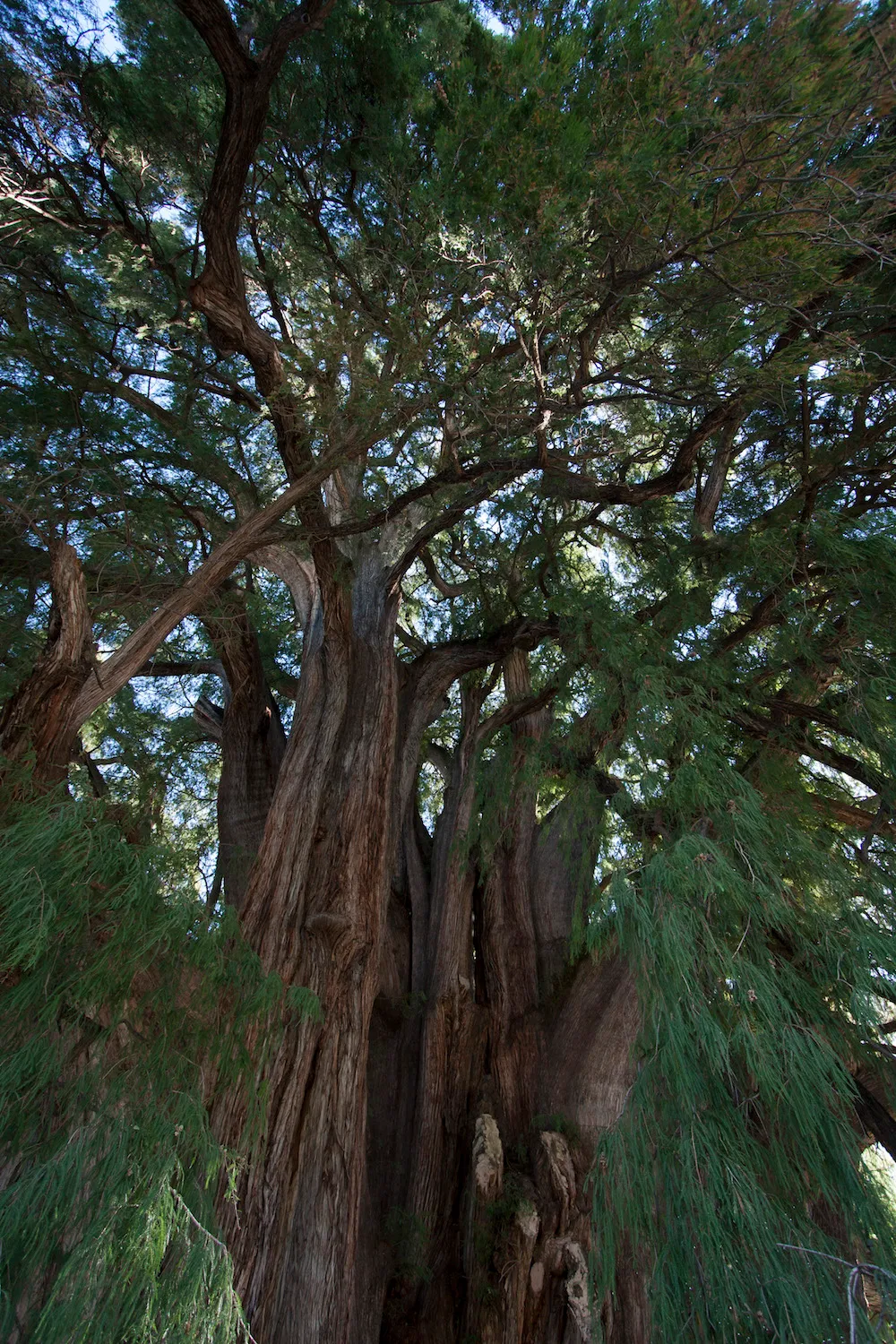
Photo source: CONAFORCONAFOR
Ahuehuete (Taxodium mucronatum)
Also known as Taxodium huegelii (C. Lawson 1851), is an arboreal species belonging to the cupresaceae family. It has been an important tree since pre-Hispanic times and was officially chosen in 1921 as The national tree of Mexico. They are very long-lived trees that exceed 500 years, and are characterized by being a tree that grows close to water; especially on the banks of rivers, streams, ponds, and lakes.
The popular name of this species comes from the Nahuatl word “ahuehuatl”, which means “an old water tree”. It is considered an ornamental and shade tree. The wood is soft and light, susceptible to polishing and resistant to moisture, so it is used in the manufacture of canoes, poles and beams. In addition, wood is used in construction and the stalk is used as firewood. Mexican herbalism uses its bark, resin and leaves primarily to heal burns and ulcers.
Family: Cupressaceae
Common names: Ahuehuete, sabino, Mexican cypress, Moctezuma ahuehuet cypress, tule.
Distribution: Native species.
Conservation Status IUCN Network list: LC (Least Concern)

Photo source: Absolute AdventureAbsolute Adventure
Ceiba (Ceiba spp.)
Ceiba spp. It is a genus with about 21 accepted species and has the greatest diversity (13 species) in South America. They are large trees, which can measure up to 70 meters and the trunk generally has thorns, at least when it is young, which is a very particular characteristic of these trees and makes it easy to identify them. Some species are for timber use and their fruit produces a type of cotton that is also used for economic purposes. It has medicinal properties and its oil can be used for cosmetic and lubricating purposes. It is considered a highly valuable melliferous species (plant that provides pollen for honey bees). In addition, It is a tree of great importance for the Mayan peoples: they consider it sacred and it was conceived as the axis of the world that connected the three planes of the cosmos.
Family: Malvaceae
Common Names: Pochota, Ceiba
Distribution: From Mexico to southern Chile.
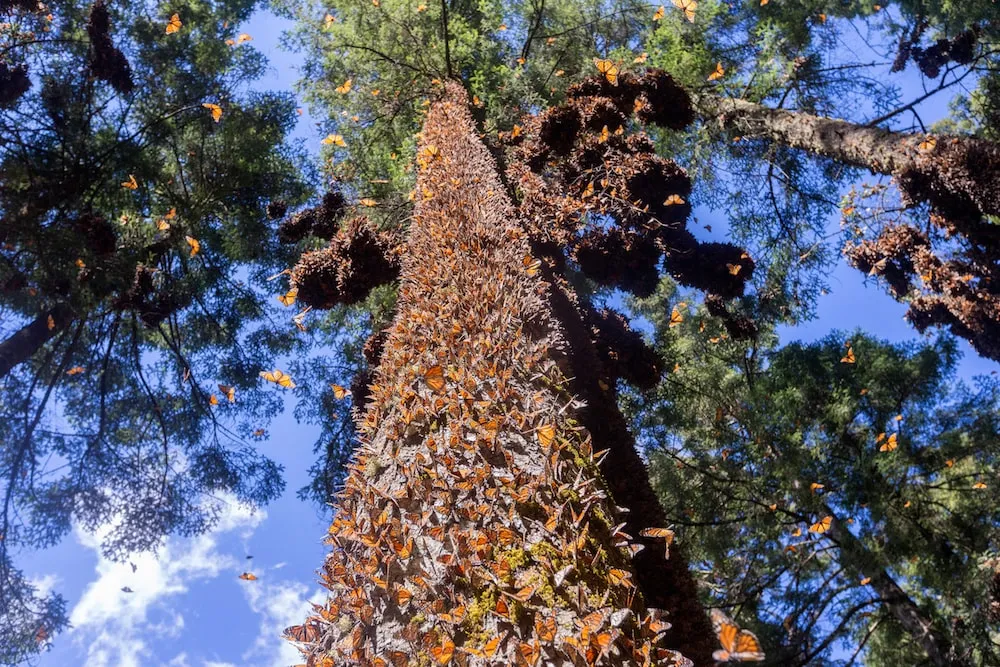
Photo source: Applewood Seed Co.Applewood Seed Co.
Oyamel (Abies religiosa)
Oyamel is a conifer of the Pinaceae family. It grows up to 50 m in height. Its leaves are acicular and its branches are shaped like a cross and hence the name “religious”. It is a high mountain tree that is very resistant to cold, but not so resistant to heat. In the states of Michoacán and Mexico, The forests of Oyamel are the favorite refuge of monarch butterflies who migrate in winter from Canada. Unfortunately, deforestation is a threat to oyamel forests and therefore to the monarch butterfly, so the conservation of one species depends on the other. Any use of this tree must be using sustainable practices.
It has uses in construction, such as wood for fencing, and in the manufacture of pallets and packaging. However, given its density, it is not recommended for uses that subject it to high resistance, since it is a soft, light and porous wood. It is also often used ornamentally as a Christmas tree.
Family: Pinaceae
Common names: Spruce, Cahuite, Oyamel, White Oyamel, Oyamel Cenizo, Oyamel de Juárez, Oyamel de Jalisco, Neovolcanic Oyamel, Oyamel obscure, Pinabete, Pinabeto, Christmas Pine, Romerillo, Tejamanil, Christmas Tree.
Distribution: Species endemic to Mexico from the central mountains and southern Mexico (Neovolcanic Axis, Sierra Madre del Sur).
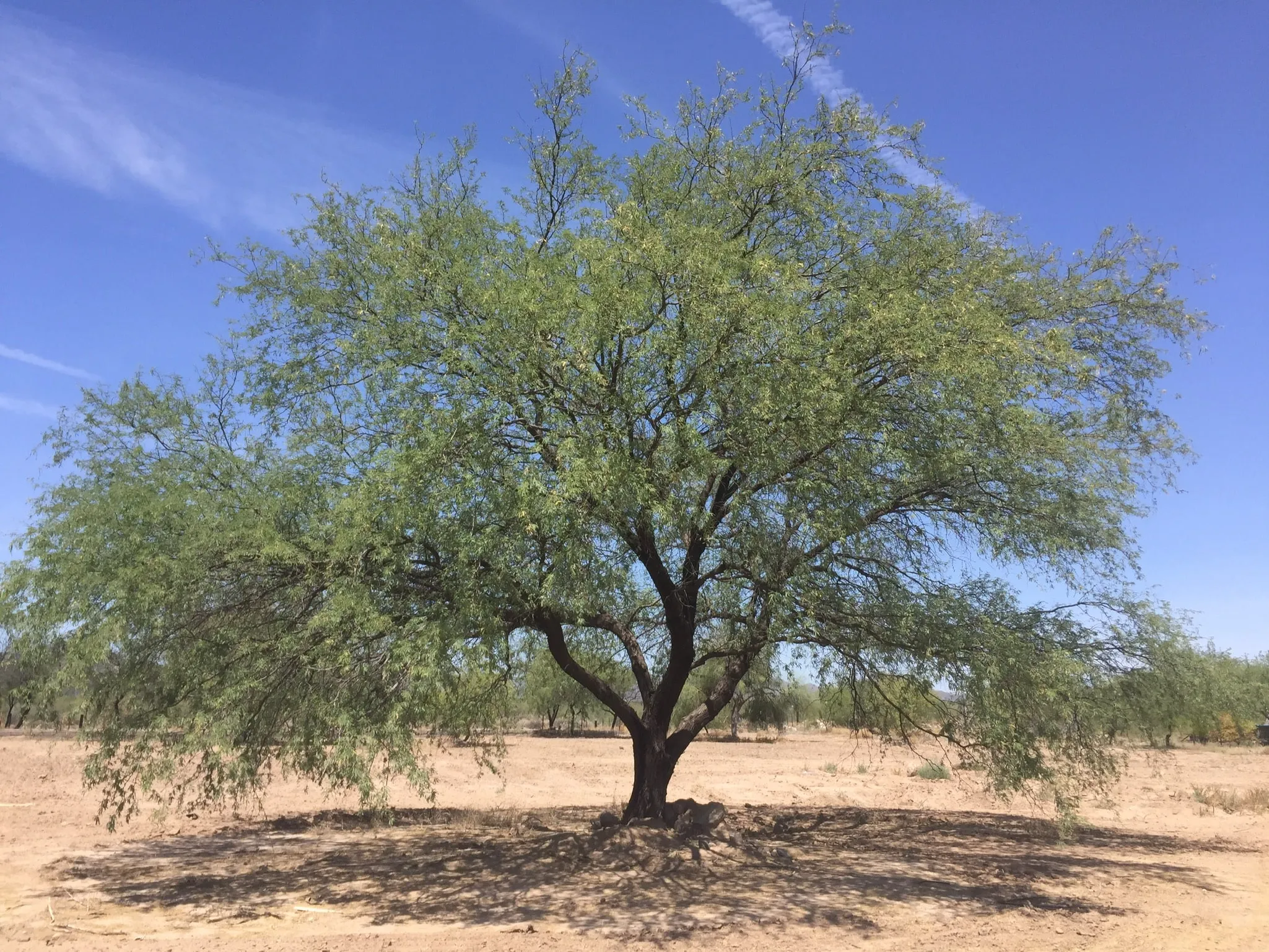
Photo source: Lumari Lumari
Mesquite (Prosopis)
Prosopis It is a genus of 45 species, of which nine are found in the arid or semiarid regions of Mexico and are known as mesquite. Although the territory is home to one of the most common species on the continent, Prosopis laegivata which also extends to South America, in Mexico we have totally endemic species, such as Prosopis mayana in the Yucatan Peninsula, which is not found anywhere else in the world.
Almost the entire tree can be used and its culinary uses are important and varied: its seeds, which are formed in a pod by what is considered a leguminous plant, have been used as human food and as fodder. A nutritious flour is also prepared from the seeds and a sweetener is extracted. In addition, firewood is used to give a particular flavor and aroma to smoked dishes. As if that weren't enough, root bark and leaf juice have traditional medicinal uses, such as for eye diseases.
In addition to its use, its ecological role is notable for being nitrogen fixer in soils and have very wide and deep roots, then improves soil condition and prevents erosion. The thickets of mesquite and huizache (a medically important shrub) are habitat for the cocopache, an edible insect in Mexico, also known as the giant bed bug or xamue. Another insect that depends on mesquite is the bee, which after pollinating the flowers of the tree produces commercially important honey.
Family: Fabaceae (legumes)
Common names: Mezquite, carob.
Distribution: From the southern United States to Chile and Argentina.
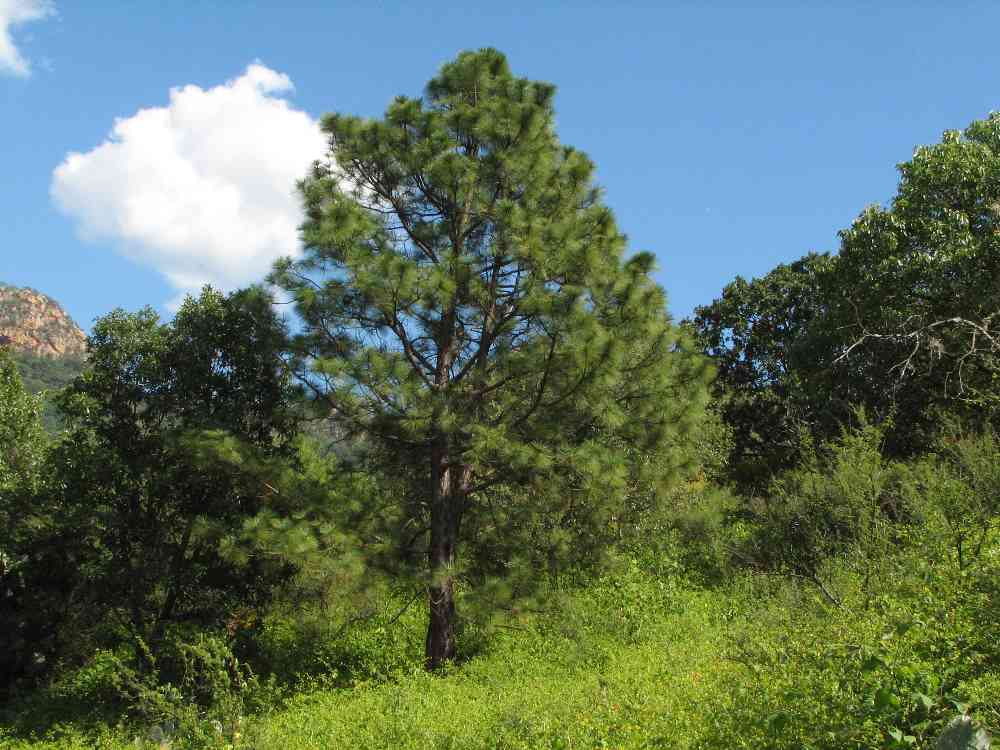
Photo source: Forestry Timber Forest Timber
Yellow pine (Pinus oocarpa)
Pine trees are particularly important in Mexico because evolutionarily they are the place of origin and diversification of a large number of their species, of which there are approximately 110, with 46 inhabiting our country. Most of them have been used for their wood and resin, and among them is yellow pine, which we will use as an ambassador for pine trees for the purpose of this article. It reaches a size of 15 to 25 m in height, with a thick trunk and gray or red-brown bark and It is the main producing species of pine resin in Mexico. It is one of the most used species in the forestry industry and its wood is used for construction, doors, furniture, packaging, crafts and pulp for paper, among other uses. It is also used as fuel, such as firewood and charcoal.
Thanks to its ability to grow in infertile and degraded sites, it also plays an ecological role for reforestation and is suitable for soil recovery. It is also used medicinally in some southern states such as Guerrero, Oaxaca and Chiapas to treat dysentery, pneumonia or cough.
Family: Pinaceae
Common names: Yellow pine, Ocote pine, hazel pine, Colorado pine.
Distribution: From Sonora, Mexico, to Central America, reaching northwestern Nicaragua.
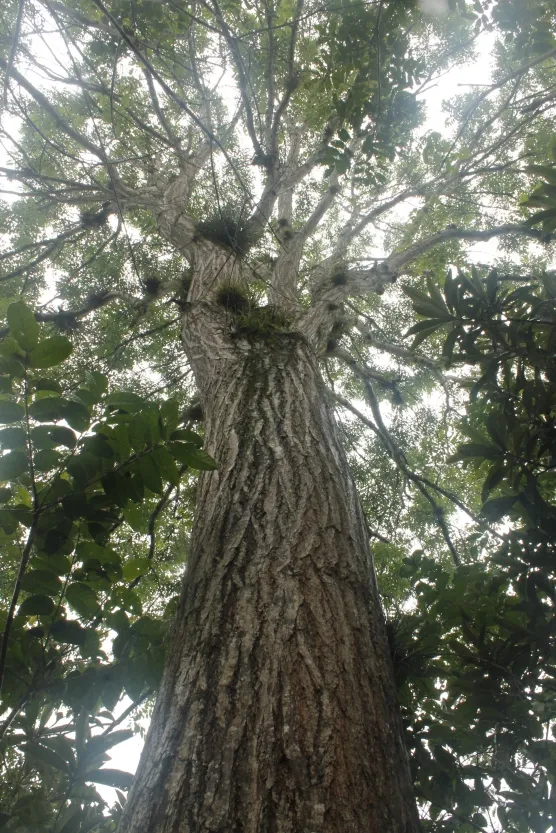
Photo source: Biodiversity Nursery NetworkBiodiversity Nursery Network
Red cedar (Cedrera odorata)
Red cedar, also called bitter cedar due to its strong aroma and flavor, has a straight trunk that can reach 40 m in height and up to 1.7 m in diameter. This plant is used ritually in cleanses, both in Huasteca Potosina and in Veracruzana. It is one of the most important precious timber species in Mexico's forestry industry: the wood is soft, light, strong, durable, aromatic, easy to work with and resistant to termites and other insects. In addition, the species is also considered to have high potential for the reforestation of forests and for the conservation and recovery of degraded soils. Finally, medicinal properties are attributed to it, using leaves, root, bark, seed, stem and exudate.
Family: Meliaceae
Common names: Cedar, Red Cedar, Bitter Cedar, Mexican Cedar, White Cedar, Cebollo Cedar, Red Cedar, Fine Cedar, Male Cedar, Oloroso Cedar, American Cedar.
Distribution: From Mexico to the south through Central America to the north of Argentina, as well as in the Caribbean.
Conservation status: IUCN - Critically Endangered; Nom 059- Special Protection; CITES Appendix II.
Thank you for sharing our passion for climate action, nature and science. We give you a gift two wallpapers made by the talented illustrator The Bird, which represent three of the most iconic trees in our beloved country: the ahuehuete, the oyamel and the yellow pine.
Bibliography:
Eguiluz T. 1982. Climate and distribution of the genus Pinus in Mexico. Federal District. Mexico.
National Forest Institute. 2017. Ocote pine (Pinus oocarpa Schiede ex Schltdl); Forest Technology Package. Guatemala, INAB 40 p.
Rodríguez Sauceda, E., Rojo Martínez, G., Ramírez Valverde, B., Martínez Ruiz, R., Cong Hermida, M., Medina Torres, S., Piña Ruiz, H. Technical analysis of the mesquite tree (Prosopis laevigata Humb. & Bonpl. ex Willd.) in Mexico. Ra Ximhai, vol. 10, no. 3, January-June, 2014, pp. 173-193. Indigenous Autonomous University of Mexico. El Fuerte, Mexico. Retrieved on December 21 at https://www.redalyc.org/pdf/461/46131111013.pdf
Rzedowski, J. 1978. Vegetation of Mexico. Limusa, Mexico City
Sanchez Gonzalez, A. 2008. A current view of the diversity and distribution of Mexican pine trees. Timber and Forests 14 (1) :107-120.
Torres, Antonio Andrade and Solís Ramos, Laura. The benefits of red cedar. Journal of scientific and technological dissemination of the Universidad Veracruzana. Vol. XVII, No. 3. Sep-Dec, 2004. Accessed at https://www.uv.mx/cienciahombre/revistae/vol17num3/articulos/cedro/index.htm
Explore reflections, research and field learning from our work in ecosystem restoration.